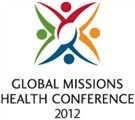The Role of the Pastor and Church (civil society) Members in Community Based Healthcare
This is a NEW EMERGING model of empowering the local church to care for the most vulnerable. Globally there has been a growing realization that the church (called civil society in government and UN circles) in its manifold expressions has been under-utilized in developing countries in community development in general and specifically in the fight against HIV and AIDS, especially with the drastic reduction of bilateral aid for HIV and AIDS related projects in developing countries. In addition, the less than successful results of the majority of educational programs promoting prevention has led to the understanding that a corrective pedagogy may be necessary since the content of the material that presented in the various events are sound. In this presentation, the mobilization of the church/civil society in a community in South Africa as well as one in Rwanda which resulted in highly clinical effectiveness will be presented. The Rwanda project has grown from regional to national in scope and focuses on the mobilization of the church/civil society for prevention and care for those infected and affected by the AIDS pandemic with special emphasis on appropriate pedagogical principles. The model, also known as the “Clinical Church” will be presented.
Meaningful segments of data that will be discussed includes: Biomedical - Knowledge concerning HIV/AIDS of the stakeholders; Cultural assumptions - Knowledge of and belief in HIV/AIDS related myths among the stakeholders; Responses (affective) - Affective responses of the stakeholders to the AIDS pandemic; analyses of the pedagogical methodology of the trainers in this community as perceived by the major stakeholders. A detailed descriptive analysis of the pedagogical strategy and context of a pilot project in Rwanda, which includes private and public sector cooperation as well as government participation, will be used to demonstrate the role of the pastor and the church in community based healthcare.
Meaningful segments of data that will be discussed includes: Biomedical - Knowledge concerning HIV/AIDS of the stakeholders; Cultural assumptions - Knowledge of and belief in HIV/AIDS related myths among the stakeholders; Responses (affective) - Affective responses of the stakeholders to the AIDS pandemic; analyses of the pedagogical methodology of the trainers in this community as perceived by the major stakeholders. A detailed descriptive analysis of the pedagogical strategy and context of a pilot project in Rwanda, which includes private and public sector cooperation as well as government participation, will be used to demonstrate the role of the pastor and the church in community based healthcare.
Related Content





Comments